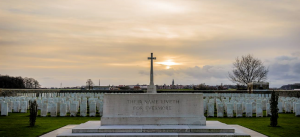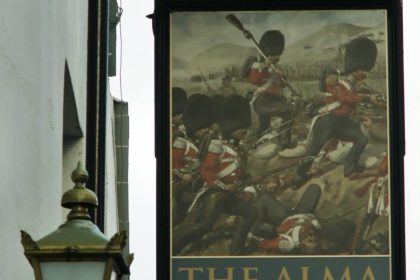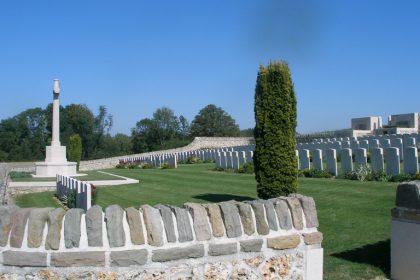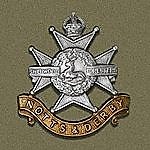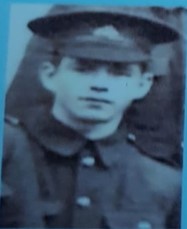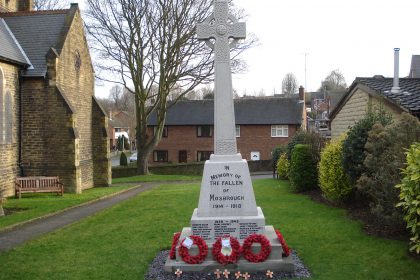Private William Whitmore – 2nd Bn King’s Own Yorkshire Light Infantry Service Number 3/1893.
Died 18 April 1915.
Buried – Oosttaverne Wood Cemetery, Heuvelland, Arrondissement Ieper, West Flanders (West-Vlaanderen), Belgium VIII. H. 10.
Inscription says: “TILL WE MEET AGAIN”
Oosttaverne Wood Cemetery is located 6 Kms south of Ieper town centre on the Rijselseweg N336 connecting Ieper to Lille. From Ieper town centre the Rijselstraat runs from the market square, through the Lille Gate (Rijselpoort) and directly over the crossroads with the Ieper ring road. The road name then changes to the Rijselseweg. 3 Kms along the Rijselseweg the road forks with the N365. The N336 is the left hand fork towards Lille. The cemetery is located 2 Kms after this left hand fork on the right hand side of the road.
The “Oosttaverne Line” was a German work running northward from the river Lys to the Comines Canal, passing just east of Oosttaverne. It was captured on 7 June 1917, the first day of the Battle of Messines, the village and the wood being taken by the 19th (Western) and 11th Divisions. Two cemeteries, No.1 and No.2, were then made by the IX Corps Burial Officer on the present site and used until September 1917. They are contained in Plot I, II, and III of the present cemetery, which was completed after the Armistice when graves were brought in from the surrounding battlefields (including many from Hill 60) and from the following smaller cemeteries:- HOOGEMOTTE FARM GERMAN CEMETERY, WERVICQ, on the Belgian side of the Lys, towards Comines; a permanent cemetery, which contained, in addition to German graves, those of twelve soldiers from the United Kingdom who fell in April, 1918. HOUTHEM-LES-YPRES GERMAN CEMETERY, on the West side of the village; a permanent cemetery in which 17 soldiers and airmen from the United Kingdom were buried in 1916-17. IN DE STER
GERMAN CEMETERY, BECELAERE, named from a cabaret on the road to Broodseinde; made by the XXVII Reserve Corps, and containing the graves of 53 soldiers from the United Kingdom who fell in October and November, 1914. KOEKUIT GERMAN CEMETERY, LANGEMARCK, on the road to Houthulst, in which eight soldiers from the United Kingdom were buried in October, 1914. TENBRIELEN-AMERIKA GERMAN CEMETERY, in the Haut-Bois, North of Comines, now containing about 850 graves. Six soldiers from the United Kingdom were buried here in April, 1917.
THREE HOUSES GERMAN CEMETERY, HOLLEBEKE (or HOLLEBEKE CEMETERY No. 60), on the Kortevilde-Verbrandenmolen road, across the canal; three soldiers from the United Kingdom and two from Canada were buried there in 1916. ZWAANHOEK GERMAN CEMETERY, BECELAERE, on the South side of the Molenhoek-Reutel road; made by the XXVII Reserve Corps, and containing the graves of six soldiers from the United Kingdom who fell in October, 1914.
CROONAERT CHAPEL was a shrine in a hamlet on the Wytschaete-Voormezeele road; and the cemetery is 160 yards West of that road, a mile North of Wytschaete village. It was in No Man’s Land before the Battle of Messines, 1917 During the Second World War, the British Expeditionary Force was involved in the later stages of the defence of Belgium following the German invasion in May 1940, and suffered many casualties in covering the withdrawal to Dunkirk.
The cemetery contains 1,119 First World War burials, 783 of which are unidentified. Scattered among these graves are 117 from the Second World War, five of them unidentified. The cemetery was designed by Sir Edwin Lutyens.
Copyright www.cwgc.com Info by Linda Taylor

